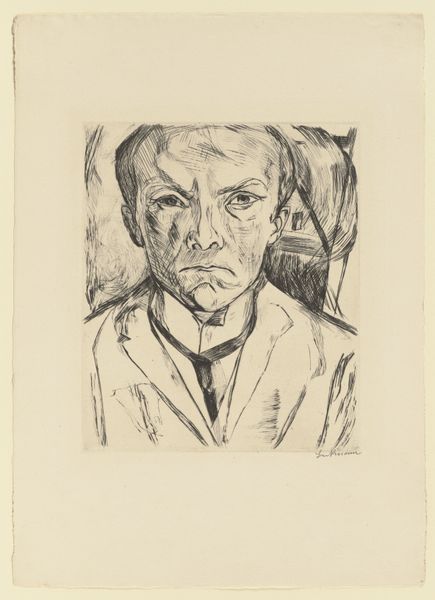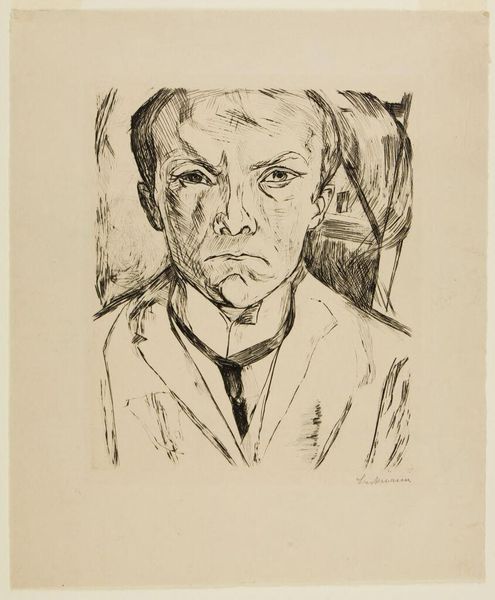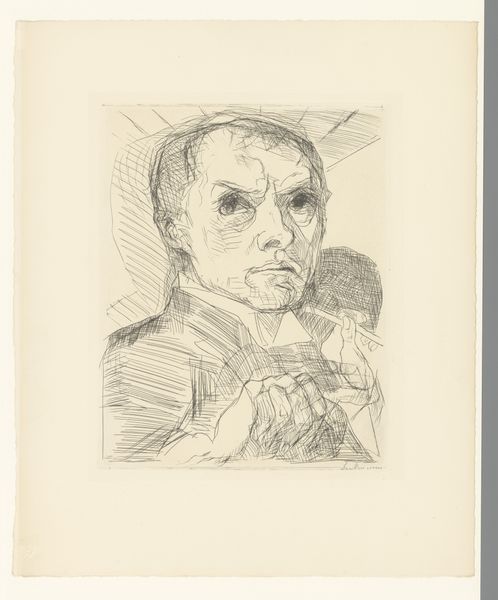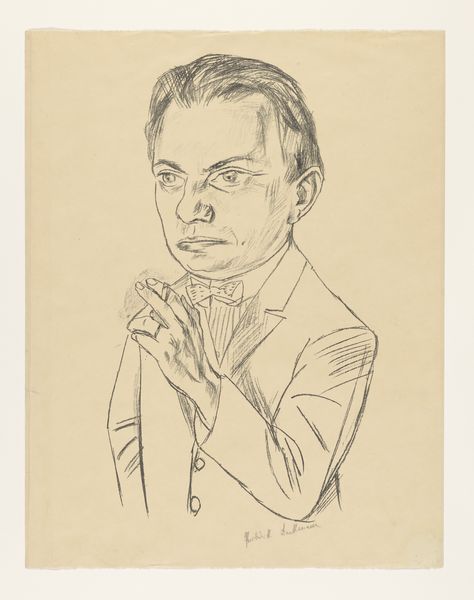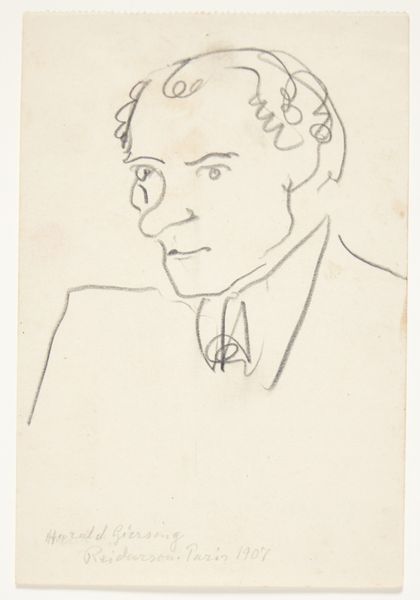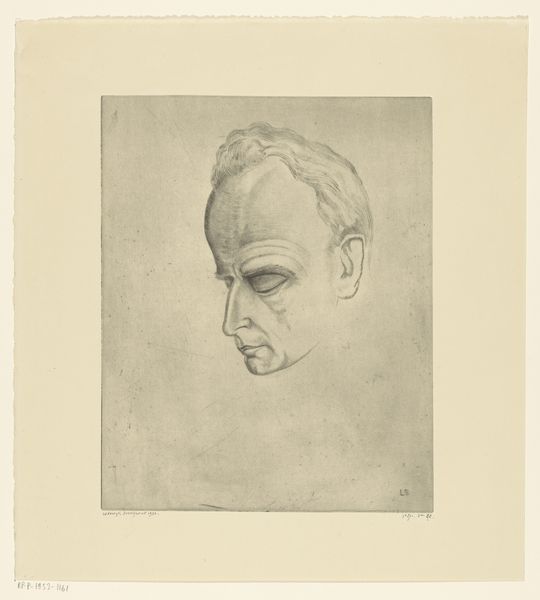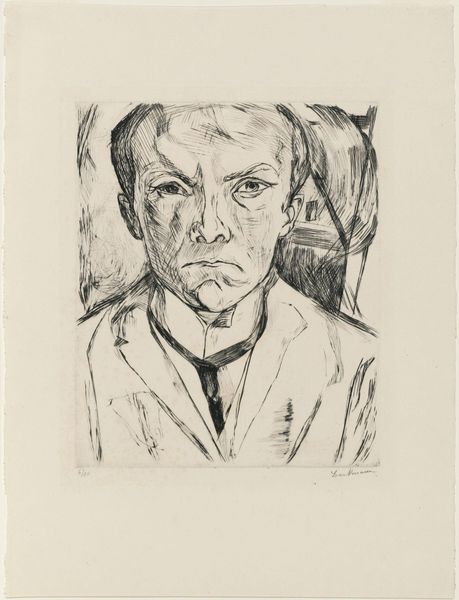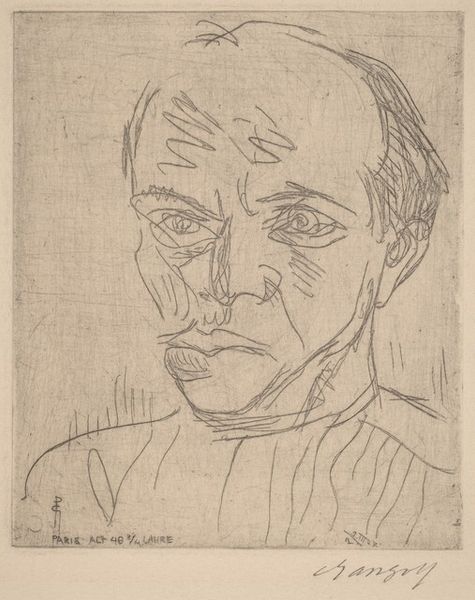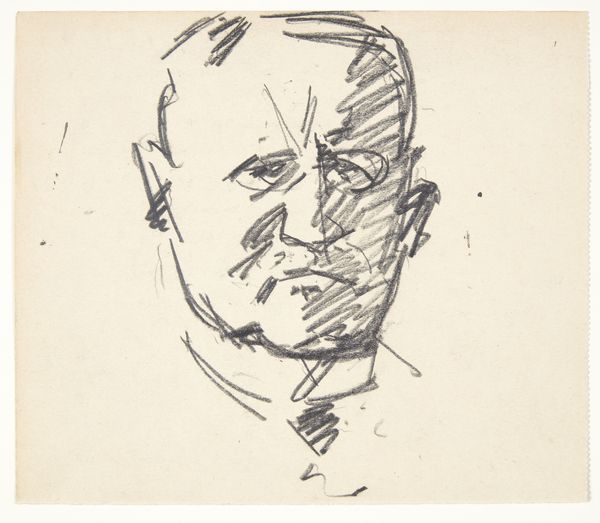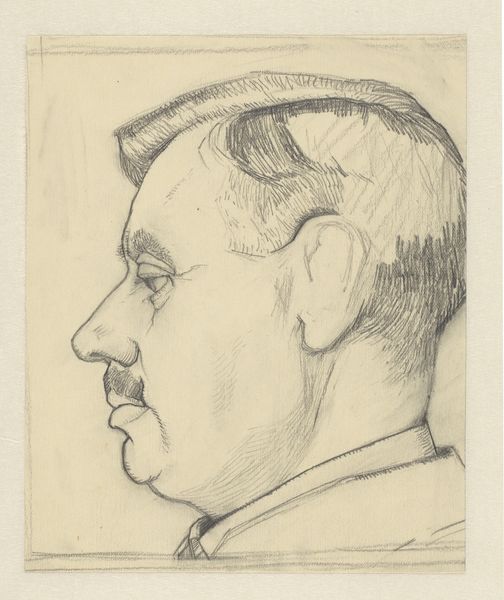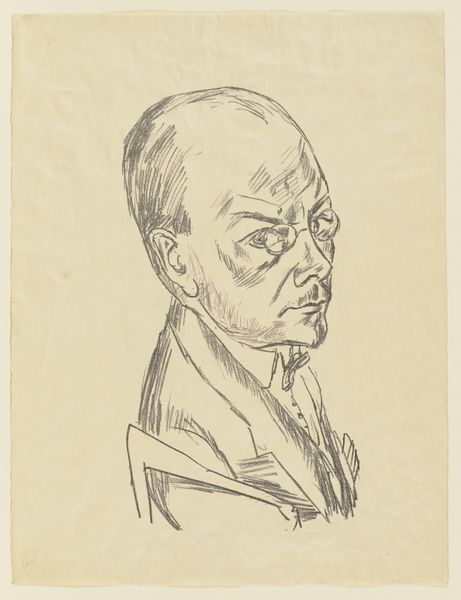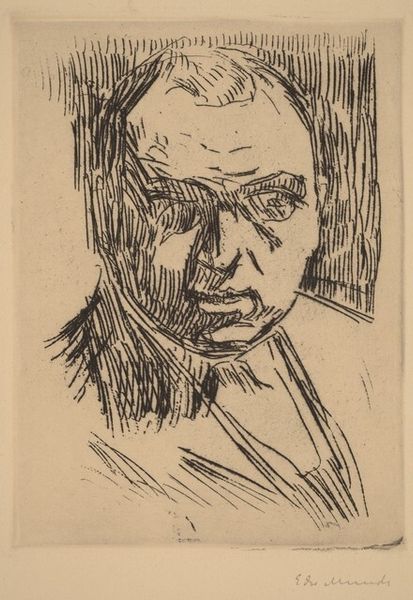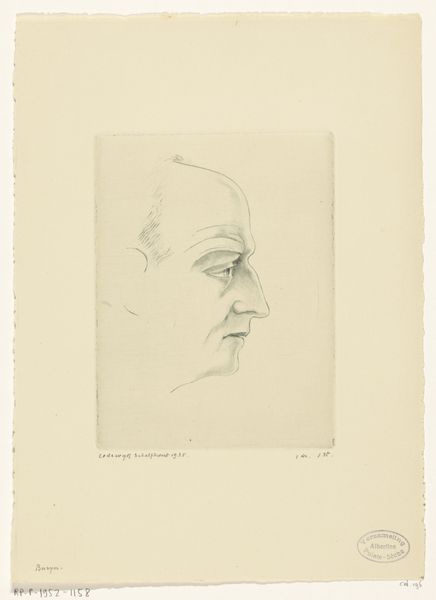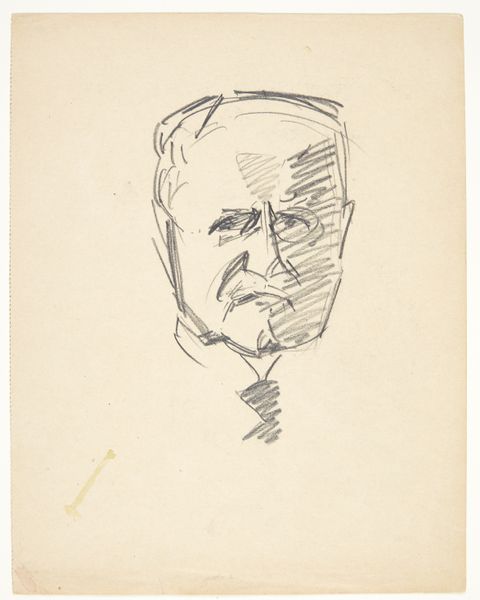
drawing, graphite
#
portrait
#
drawing
#
self-portrait
#
caricature
#
german-expressionism
#
expressionism
#
graphite
#
portrait drawing
Dimensions: height 279 mm, width 257 mm
Copyright: Rijks Museum: Open Domain
Curator: This graphite self-portrait by Max Beckmann, likely created between 1918 and 1919, arrests the eye immediately. What's your first impression? Editor: Austere. Intense. It’s hard to miss that penetrating stare. It feels… accusatory, almost confrontational. Is it meant to unsettle? Curator: Beckmann lived through some very unsettling times. His experiences in World War I deeply impacted his worldview. You can see echoes of that trauma reflected here, certainly. But the “gaze” has such a potent, and ancient symbolic power—a belief, for example, that illness and malevolence could be transmitted merely by looking at another person. Editor: So, he’s weaponizing his own gaze, consciously? Projecting an aura of power? Or perhaps acknowledging the wounds inflicted upon him? We have to remember the German art world following the war—rife with political division and the struggle for artists to find their place. This drawing was created as German Expressionism was already morphing. Curator: It's compelling how the loose hatching and cross-contour lines construct more than just the facial structure. Note the rigid set of the jaw and the furrows of the brow—it’s not merely about external resemblance, it delves into a profound emotional interiority. It certainly diverges from a classically rendered portrait. Editor: I’d say! The distortion amplifies the emotional intensity. You see it echoed throughout Expressionist portraiture from this era, a fracturing of reality to express psychological truth. The relatively muted color palette adds to that seriousness; the medium, though simple, really works here. Was graphite a popular choice at this moment? Curator: Its accessibility likely played a role, yes. Remember the material shortages following the war. Yet, graphite's ability to capture nuance with subtlety would appeal to Beckmann. The gaze, the posture...there's a refusal to be vulnerable, perhaps, but a simultaneous exposure of vulnerability too. The “artist” is laid bare. Editor: Yes, the starkness forces you to engage. Knowing that Beckmann grappled with anxieties about his place in the art world after serving in the medical corps makes the raw honesty of this portrait even more compelling. He’s not just presenting himself, he’s presenting an argument. Curator: Indeed. It makes me consider how our current understanding of art history continues to shape our encounter with Beckmann's work today. There’s always a filter, always a lens. Editor: Absolutely. And even in its apparent simplicity, this drawing reveals layers of artistic intention and historical complexity that deserve deeper attention.
Comments
No comments
Be the first to comment and join the conversation on the ultimate creative platform.
